Rufus Benjamin Jackson
Rufus Benjamin Jackson’s Personal Narrative was derived from information found in public records, military personnel files, and local/state historical association materials. Please note that the Robb Centre never fully closes the book on our servicemembers; as new information becomes available, narratives will be updated to appropriately represent the life story of each veteran.
Please contact the Robb Centre for further clarification or questions regarding content or materials.
Military Honor(s):
Distinguished Service Cross
Citation: The President of the United States of America, authorized by Act of Congress, July 9, 1918, takes pleasure in presenting the Distinguished Service Cross to Second Lieutenant (Infantry) Rufus B. Jackson, United States Army, for extraordinary heroism in action while serving with 370th Infantry Regiment, 93d Division, A.E.F., near Farm La Folie, France, 28 September 1918. Having been ordered to use his Stokes mortars in wiping out machine-gun nests, which had been resisting the advance of his company, Lieutenant Jackson made a personal reconnaissance by crawling to the enemy's lines to locate the nests. Accomplishing his purpose, he returned and directed the fire, silencing the guns.
Life & Service
- Birth: 12 July 1896, Buffalo, WY, United States
- Place of Residence:
- Race/Ethnicity: African American
- Death: 31 March 1992 Detroit, MI, United States
- Branch: Army
- Military Rank: Second Lieutenant
- Company:
- Infantry Regiment: 370th
- Division: 93rd
Rufus Benjamin Jackson was born to John (1861-1930) and Mary Jane Wilson (1866-1934) on July 12, 1896 in Buffalo, Johnson County, Wyoming. Their only child, John and Mary moved Rufus around the country several times to comply with John’s service assignments in the United States Army (serving with the 9th Cavalry and 24th Cavalry from 1882 to 1914). Living in Buffalo, Kansas City, Missouri, and finally Des Moines, Iowa; Rufus attended East High School in Des Moines and graduated in 1914.
Rufus competed in local debate competitions (often times one of only a few African-American contestants), was a member of East High’s Quill Yearbook staff, and was a consultant for the Iowa State Bystander after graduation. Rufus then went on to attend Iowa State College in Ames, Iowa from 1914 to enlistment.
Jackson entered the United States Army on July 25, 1917 as a Sergeant, by February of 1918 becoming Second Lieutenant, stationed at Camp Logan, Houston, Texas. 2 Lt. Jackson and his company left Newport News, Virginia on 29 May 1918 via the U.S. Army Transport Ship Amphion. Jackson wrote to his parents and friends several times whilst overseas;
“July 18, 1918…I have charge of the trench mortar section of this camp, and am very well pleased with the personnel of my section, but I never let them know that I am pleased with them. But they can shoot fast and straight, and the interest which they show would satisfy the crabbiest sergeant”.
“December 18, 1918…We are living in a large chateau and enjoying all the pleasures of country gentlemen. In view of the fact that the other large buildings in Soissons are demolished, we are at a loss to know just why this place is intact. You know we are very suspicious of whole structures in this section. One funny incident about our return. We had done thirty-six kilometers and were dead tired. When we arrived in Froidmont-Cohartile we were told to five kilometers further to Barrenton-sur-Serre. On arriving we billeted our men and all five of us made a rush for the only whole building in the town. We slept well and left the next morning for Vesneuil. That afternoon one of our men, returning for some forgotten article, found the house fenced in and a sign proclaiming the presence of a large mine in the basement…But all those things do not dampen our ardor, for we are on our way home and we will come near bringing our regiment filled up. We have 52 percent of our original regiment”.
2 Lt. Jackson received the Distinguished Service Cross for his actions near Farm La Folie, France on September 28, 1918:
“The President of the United States of America, authorized by Act of Congress, July 9, 1918, takes pleasure in presenting the Distinguished Service Cross to Second Lieutenant (Infantry) Rufus B. Jackson, United States Army, for extraordinary heroism in action while serving with 370th Infantry Regiment, 93d Division, A.E.F., near Farm La Folie, France, 28 September 1918. Having been ordered to use his Stokes mortars in wiping out machine-gun nests, which had been resisting the advance of his company, Lieutenant Jackson made a personal reconnaissance by crawling to the enemy’s lines to locate the nests. Accomplishing his purpose, he returned and directed the fire, silencing the guns”. Awarded DSC by CG, AEF, February 12, 1919. Published in G.O. No. 46, W.D., 1919.
2 Lt. Jackson and his company returned to the United States in February of 1919, he was Honorably Discharged on February 28, 1919 at Camp Grant, Illinois.
2nd Lieutenant Rufus Jackson served in the 370th Infantry Regiment, 185th Infantry Brigade of the 93rd “Blue Helmet” Division during the time of his act of valor on 28 September 1918, the following is his story:
Ferme La Folie – 28 September 1918
To understand the adversity that 2nd Lieutenant Jackson faced during his act of valor, it is important to understand the activities leading to the date of his act and how 2nd Lieutenant Jackson’s action are both heroic and selfless:
While the rest of the 93rd Division were serving in the Meuse-Argonne Offensive with the French Fourth Army, the 370th Infantry Regiment had been participating in the Oise-Aisne Offensive with the French Tenth Army, which had originally began on 18 August 1918, with the objective of acting as a secondary operation that would converge with the Meuse-Argonne Offensive. The 370th Infantry Regiment fought as part of the French 59th Division, French XXX Corps, of the French Tenth Army and participated in the operations from 15 September to 11 November 1918.
Upon arriving to the French 59th Division, the 370th Infantry Regiment had to surrender their American equipment and adopt the French equipment to better integrate into the unit and have the necessary sized ammunition for their combat role. The highly accurate M1903 Springfield rifle had been traded for the obsolete French Level Model 1886 rifle, which were considered “cumbersome and inaccurate” while the M1917 Brodie helmet was traded for the French Adrian Helmet.
24 September 1918:
 The 370th Infantry Regiment relieved the French 325th Infantry Regiment along the line and took command of the western subsector of the French 59th Division upon arriving to the line. The line followed a canal from a bend west of Courson to the town of Ecluse, and the command of the 370th Infantry was decided to be left in the hands of the African-American officers rather than French officers taking over complete command of the regiment.
The 370th Infantry Regiment relieved the French 325th Infantry Regiment along the line and took command of the western subsector of the French 59th Division upon arriving to the line. The line followed a canal from a bend west of Courson to the town of Ecluse, and the command of the 370th Infantry was decided to be left in the hands of the African-American officers rather than French officers taking over complete command of the regiment.
The noise made from the relief alerted the Germans, with a German intelligence summary stating that “The circulation in hereto quiet sectors… points to the possibility of an attack along the whole front from Reims to Verdun… At night [of 24 September 1918] great activity reigned along our front. The noise of narrow-gauge railways, the unloading of heavy material, loud cries, sirens and klaxons could be heard throughout the whole night.”
25 September 1918:
 With the 370th Infantry Regiment now attached to the French 59th Division, General Vincendon who was commanding the French 59th Division observed that the 370th Infantry Regiment was not sufficiently trained. He was optimistic and believed that under the guidance of the French, the 370th could be turned into an effective combat unit. Despite its training, the 370th Infantry Regiment had engaged in minor local fighting throughout the day with the French 59th Division with the objective of clearing the Germans from the triangle formed by the road, canal, and railroad.
With the 370th Infantry Regiment now attached to the French 59th Division, General Vincendon who was commanding the French 59th Division observed that the 370th Infantry Regiment was not sufficiently trained. He was optimistic and believed that under the guidance of the French, the 370th could be turned into an effective combat unit. Despite its training, the 370th Infantry Regiment had engaged in minor local fighting throughout the day with the French 59th Division with the objective of clearing the Germans from the triangle formed by the road, canal, and railroad.
These operations would continue for the next 48 hours, and with the start of the Meuse-Argonne Offensive approaching, the fighting became more intense. Around 2300 hours (11:00 P.M.), French artillery began a 6.5 hour artillery barrage and a French observer noted that the “thunder and roar of the massed artillery shook the earth and the sky was alight with the flashes of guns. It was wondrous – it was insanity and the fever gripped us all.”
26 – 27 September 1918:
Throughout the day of 26 September 1918, the 370th Infantry Regiment continued to conduct in local fighting. During the late night of 26 September and early morning of 27 September 1918, the 1st Battalion were ordered to be relieved by the 2nd Battalion of the 370th Infantry Regiment where around 0200 hours (2:00 A.M.), the 2nd Battalion completed its relief. An attack along the Oise-Aisne Canal was then ordered and began at dawn, with the 370th Infantry Regiment in-between two French Regiments. The French 31st Division of the French XVI Corps was located to its left flank, while the French 325th Infantry Regiment was located to the right flank.
The advance was slow because the Germans had expanded a series of natural caves in the area, and constructed tunnels to provide shelter from Allied artillery. Subsequently, the preparatory barrage on the night of 25 September 1918 did little to force the Germans out of their positions. The Germans gave stiff resistance and the 370th Infantry Regiment were forced to participate in close quarters combat. Due to a lack of coordination between companies, as well as poor liaison with the French elements on either flank, the 370th sustained heavy casualties.
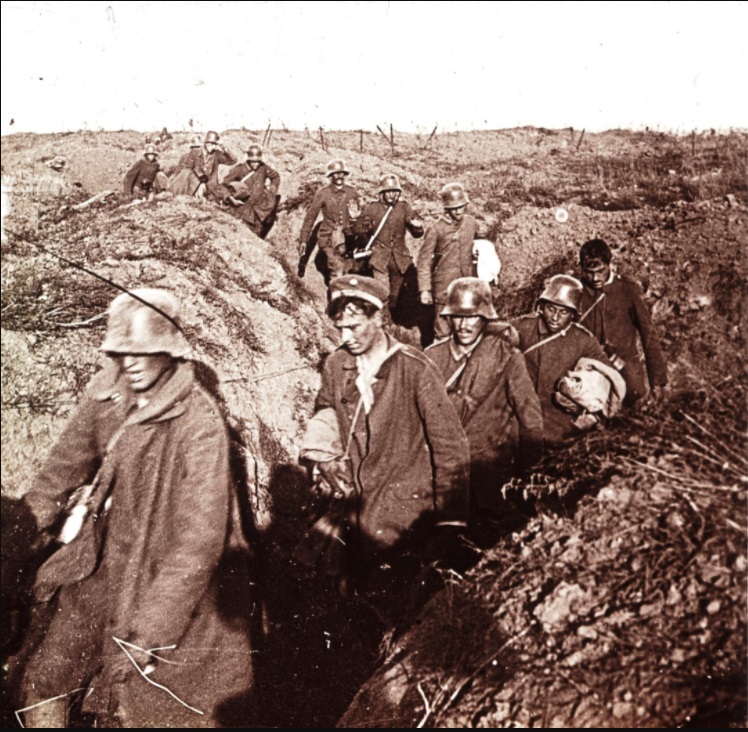
Surrendering German soldiers in Vauxaillon, France – ((From a stereoscopic glass plate) Ref. 2007-035-002)
However, the Germans were suffering as well. They were in desperate need for reinforcements to block the Meuse-Argonne Offensive being conducted to the east, and it was necessary that German reinforcements be sent to the front along the Meuse-Argonne to avoid losses in holding the Laffaux Salient. Subsequently, the Army Group German Crown Prince approved a withdrawal of the German Seventh Army that had been fighting the 370th Infantry Regiment and its French counterparts. During the night of 27 September 1918, under the cover of darkness and deafening artillery, the German Seventh Army began withdrawing from the area.
The French Tenth Army received orders to move forward and take the city of Laon, which was approximately 30 kilometers northeast of the 370th Infantry’s position. Subsequently, the line of the French Tenth Army was to begin a mass forward movement. The 370th Infantry Regiment faced two main obstacles between their objective location and themselves, the Ailette Canal and the Bois Mortier, which were both strongly fortified German positions that even the French declared impossible to take.
28 September 1918:
The casualties were quickly mounting for the 370th Infantry Regiment. Colonel Roberts, commanding the 370th Infantry Regiment, sent for the Chaplain of the regiment and the conversation was less than inspiring.
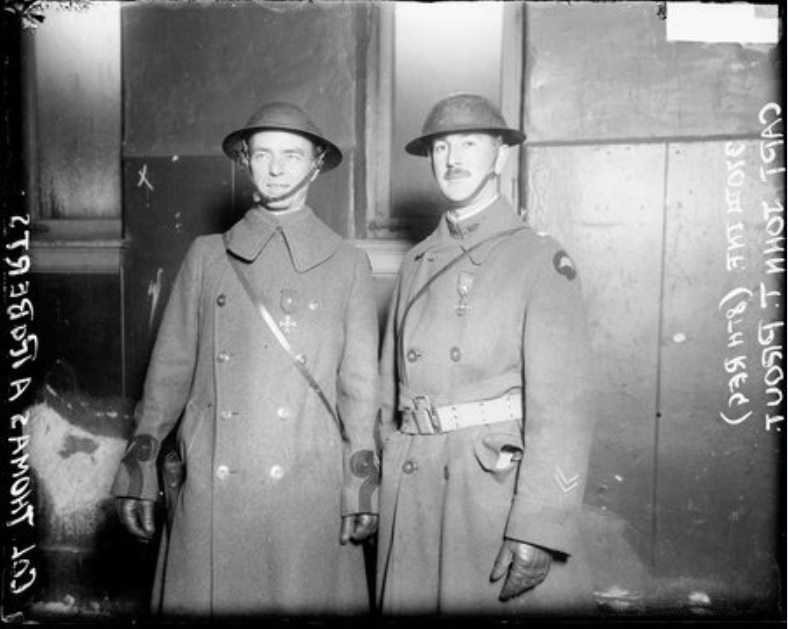
Colonel Thomas A Roberts (Left) and Captain John T. Prout (Right) of the U.S. Army 370th Infantry Regiment – Circa 1919
[Colonel Roberts]: “Well, none have been killed.“
[Chaplain]: “Sir, I have buried forty.”
[Colonel Roberts]: “Well that’s what soldiers are for, to be killed and wounded.“
–
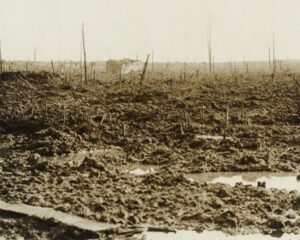
This photo depicts the battlegrounds of Remus Wood during the Battle of Passchendaele (1917). The terrain is similar to what the 370th Infantry Regiment would have crossed during its movements on 28 September 1918.
After two days of fighting, the men of the 370th Infantry Regiment had consumed the majority of their prepared rations. Excluding the occasional delivery of the hard French bread brought to the line in rucksacks, many of the men of the 370th went more than a day between meals while continuously fighting. The 370th were exhausted and miserable, this was exasperated by the heavy rain and wind that made the soil sludgy and filled shell holes like small ponds. The ground was in matchwood created by exploding trees from the volley of artillery, and heavy barbed-wire made any rapid advances difficult on the best of days.
At 0100 hours (1:00 A.M.), information of the German withdrawal to Canal de l’Oise a l’Aisne and Bois de Mortier had reached the French Tenth Army. The French Tenth Army ordered all of its frontline battalions to attack at daybreak and gain contact with the Germans. The 2nd Battalion of the 370th Infantry Regiment received the attack order, specifying the continuation of a march in echelon formation in rear and to the left of the 325th Infantry Regiment located to its right flank. The 370th Infantry was placed in charge with protecting the left flank of the French 59th Division against any German attacks from Foret de Saint Gobain.
At 0600 hours (6:00 A.M.), General Vincedon, commander of the French 59th Division, gave orders for a battalion of the 370th Infantry Regiment to advance to a point on the opposite side of Mont des Signes and attack the German lines at 2100 hours (9:00 P.M.). However, Colonel Roberts ordered the 3rd Battalion of the 370th Infantry Regiment to attack at 0900 hours (9:00 A.M.), 12-hours too early. The 2nd Battalion of the 370th Infantry Regiment was conducting relief of its frontline battalion when the attack order came through. Although the relief was completed, the attack had to begin immediately and without preparation.
Regardless, around 0800 hours (8:00 A.M.), an advance began and Hill 158, located southwest of the town of Pinon. The 3rd Battalion advanced across a destroyed railroad and immediately met German artillery and machine-gun fire from Mont des Signes, Ferme de la Riviere and Bois de Mortier, which resulted in a halt along the center and left flank of the advancing element. The German artillery was so fierce that even if the 3rd Battalion wanted to retreat, they couldn’t given the wall of mass explosions and turned earth that trapped the men in their position.
After Colonel Roberts saw the predicament he had put his men into and only after 100 casualties were taken, he requested a counter-barrage to momentarily silence the German guns. Despite this, Colonel Roberts rest the blame on Lieutenant Colonel Otis B. Duncan for sending the 3rd Battalion forward without artillery support rather than taking responsibility for ordering the attack to commence 12 hours before it was supposed to begin. Despite the setbacks, the 3rd Battalion of the 370th Infantry Regiment continued to push forward and cleared their objective and forced the Germans to retreat over Laon-la-Fere, past the trenches of Acier, and cross the Ailette Canal.
During the attack, 2nd Lieutenant Rufus B. Jackson took action near Farme La Folie, located on the western flank of the 370th Infantry Regiment. He had been ordered to use his Stokes mortars to eliminate the German machine-gun nests that was resisting his company as well as the 3rd Battalion’s assault. Lieutenant Jackson crawled through the mud and heavy barbed-wire as the German artillery shook the ground around him and machine-gun bullets whistled by. In doing so, he was able to accurately locate the German machine-gun nests that were difficult to see due to being camouflaged, as well as the smoke that filled the air from the relentless artillery. Lieutenant Jackson crawled back to his company’s position and directed the Stokes mortar fire onto the guns, silencing them. His actions allowed the assault to continue forward, and subsequently drive the German forces from their position.
By 1200 hours (12:00 P.M.), the left flank of the 370th was able to advance and succeeded in occupying the woods located west of Ferme de la Riviere. A position on Hill 158, southwest of Pinon, was occupied and positions facing toward the north and the east were made.
The French Tenth Army issued further orders to pursue the Germans, ordering an advance to progress in a northeast direction along assigned borders. The French 59th Division was to advance in a turning moving, which would pivot the 370th Infantry Regiment. The 370th was charged with protecting the left flank of the French 59th Division from any German counterattacks from the wooded area northwest of Anizy-le-Chateau, and the attack began.
At 1720 hours (5:20 P.M.), the French 59th Division issued orders for a continuation of attack to commence throughout the night. The 370th Infantry Regiment objective location was the southern bank of the canal to be reached by daybreak of 29 September 1918. The 370th Infantry reached this location and the north bank of the canal was to be reconnoitered with another attack and set objective locations assigned. The line of the canal was divided into three regimental sectors, with the 370th Infantry Regiment extending from the Pinon-Brancourt crossing in Ecluse. Before the end of 28 September 1918; Pinon, Ouvrage Pierre, Ouvrage Jacques, and Mont des Signes were taken.
2nd Lieutenant Rufus Benjamin Jackson received the Distinguished Service Cross for his actions under General Orders No. 46, W.D. 1919
Rufus married Leona Miller on March 5, 1918 in Houston, Harris County, Texas; they lived with John and Mary Jackson briefly in the 1920s, and divorced sometime afterwards. Leona never remarried, and died in 1964. Rufus remained in Chicago until the death of his mother in 1935, when he relocated to Detroit, Michigan. He held various labor jobs, including farming, until his death on March 31, 1992 in Detroit.
Rufus is buried at Ft. Custer National Cemetery in Augusta, Michigan.
From the Files of Rufus B. Jackson
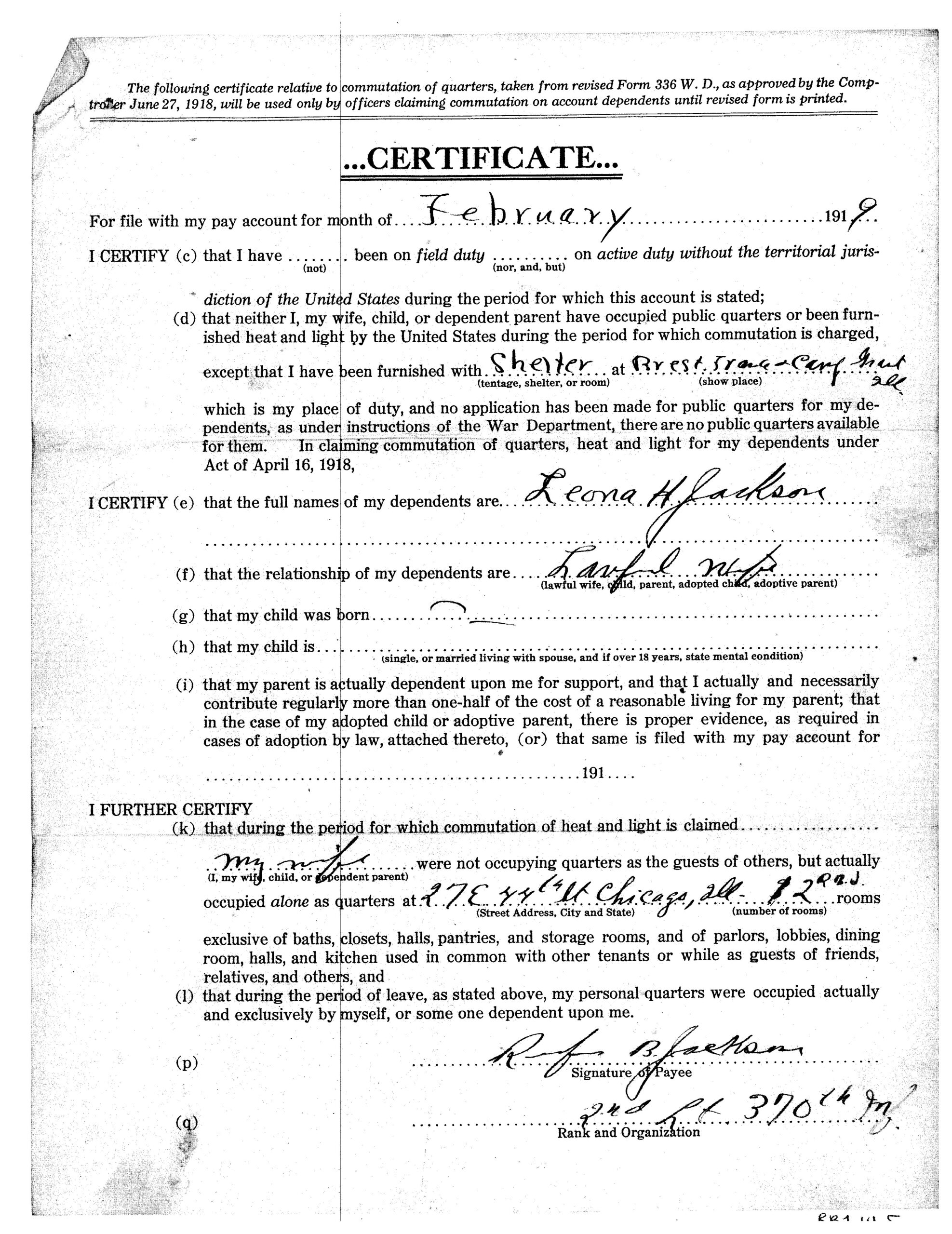


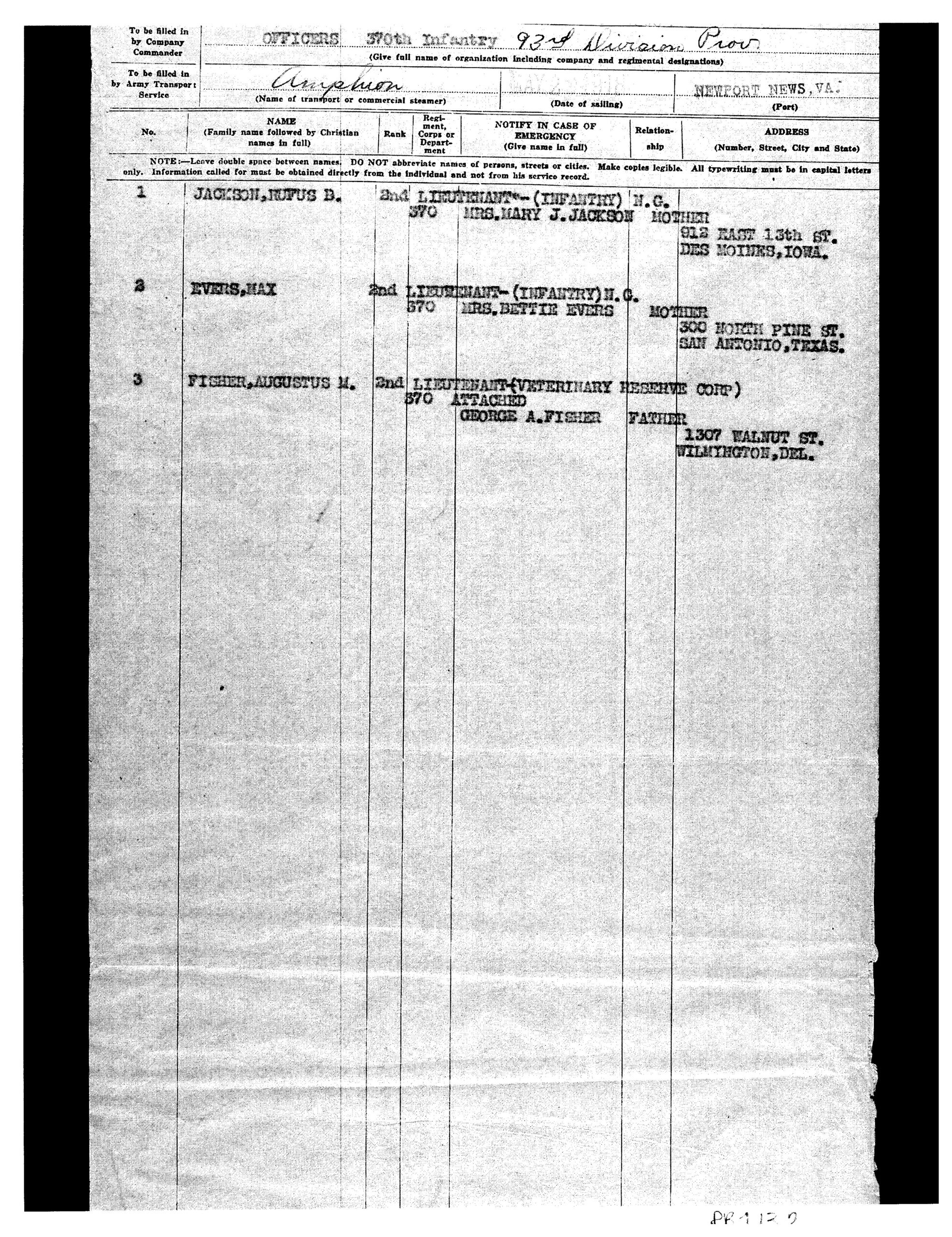
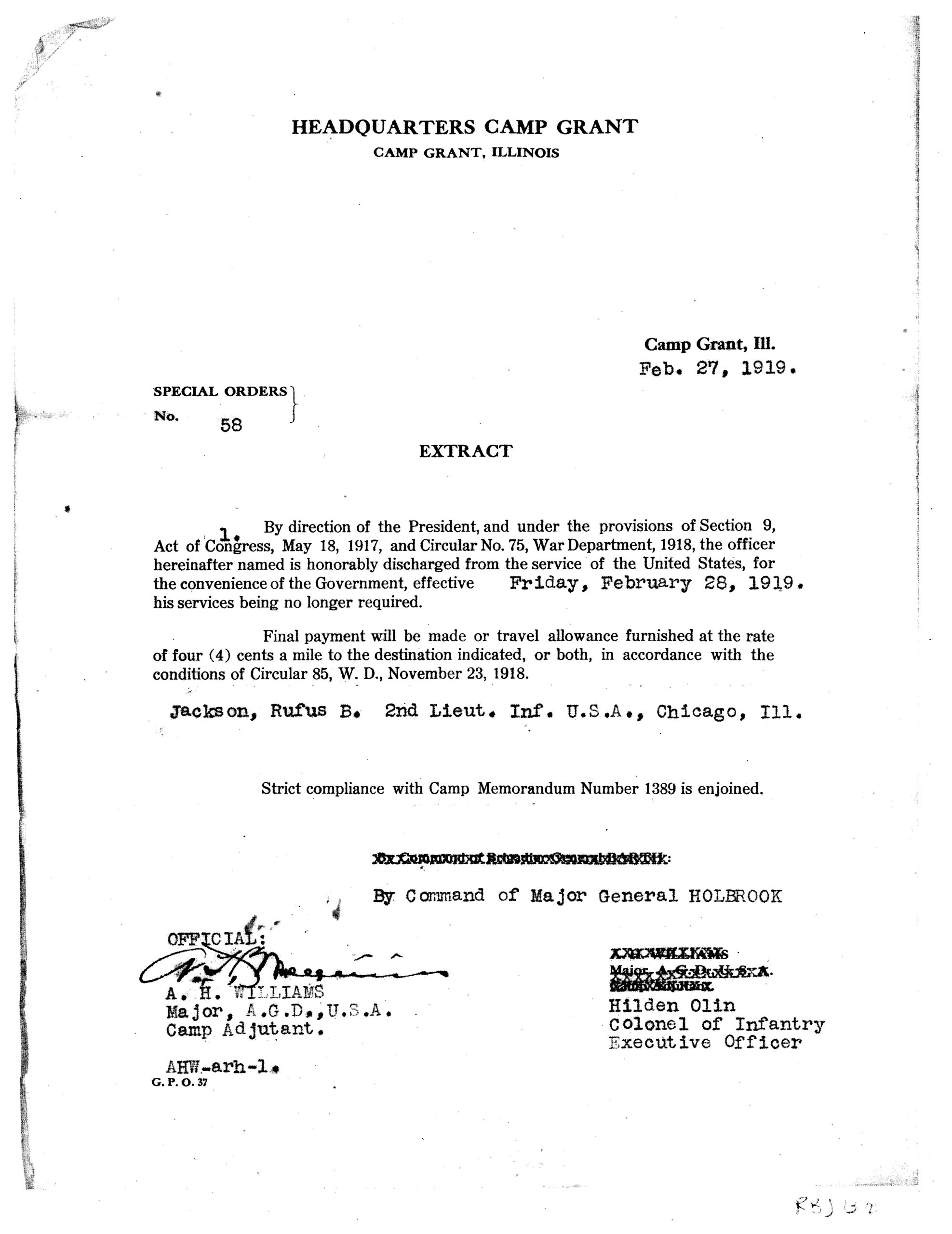
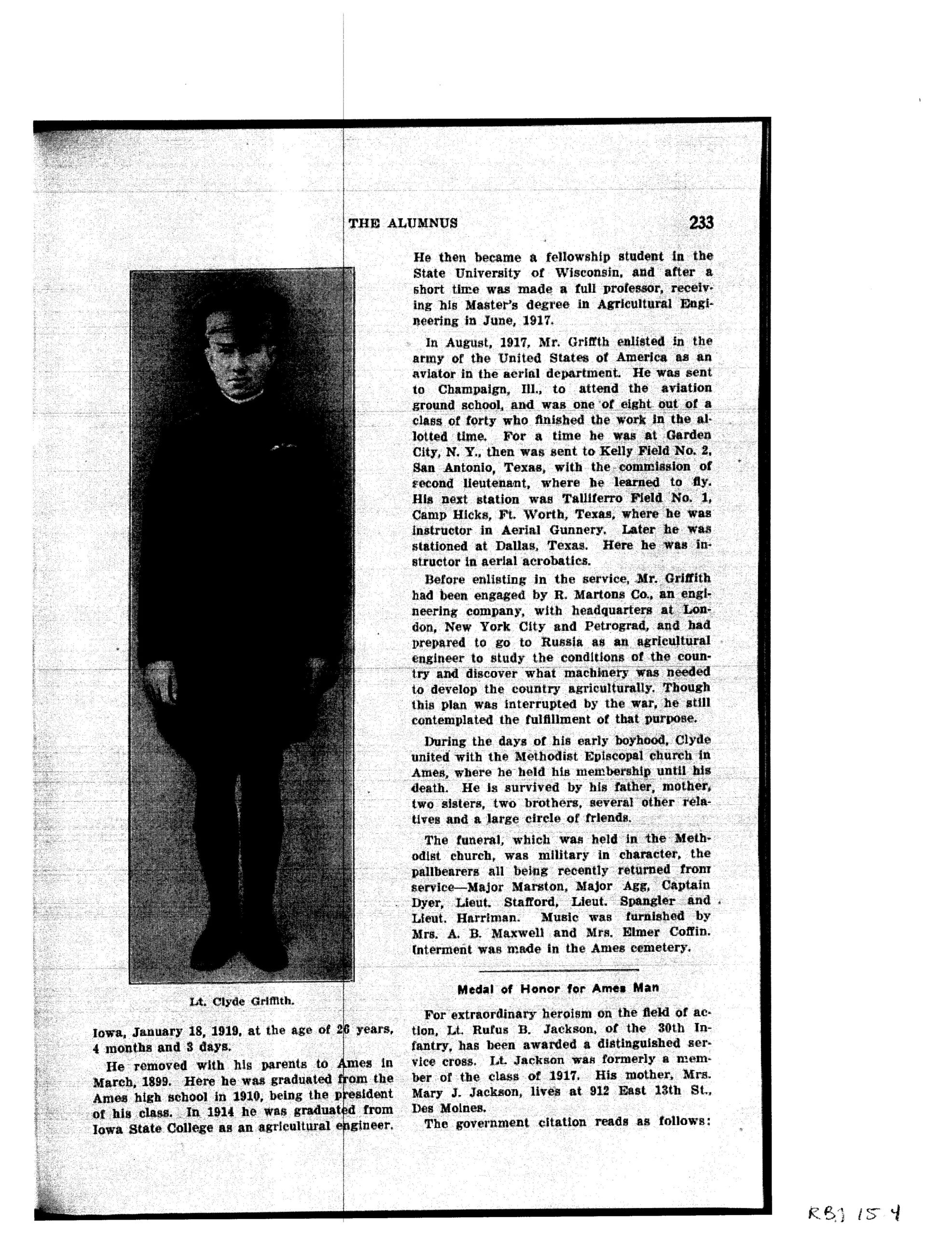

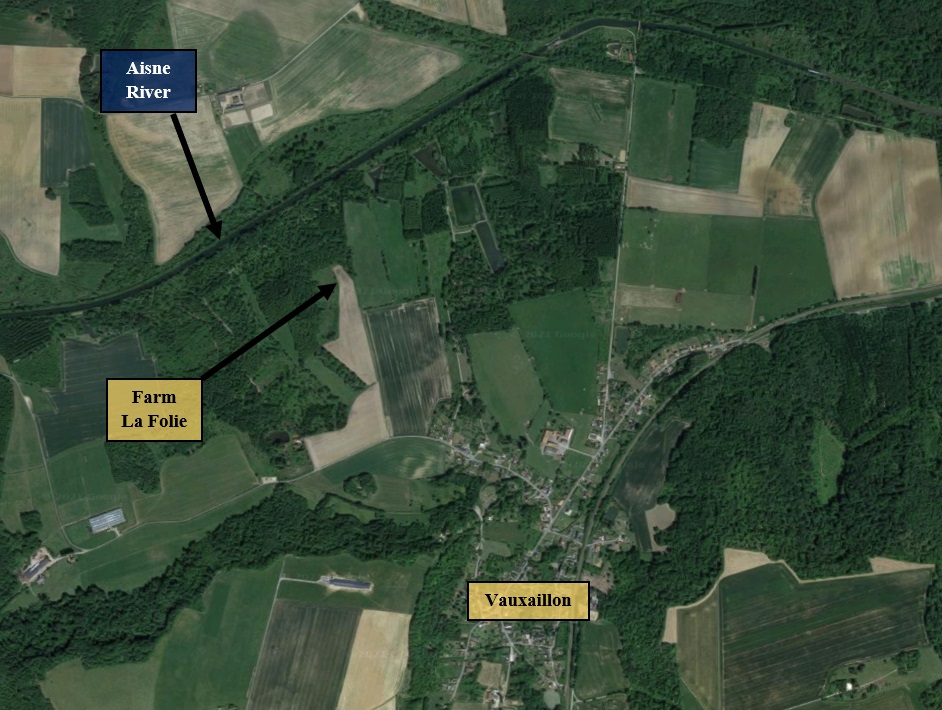
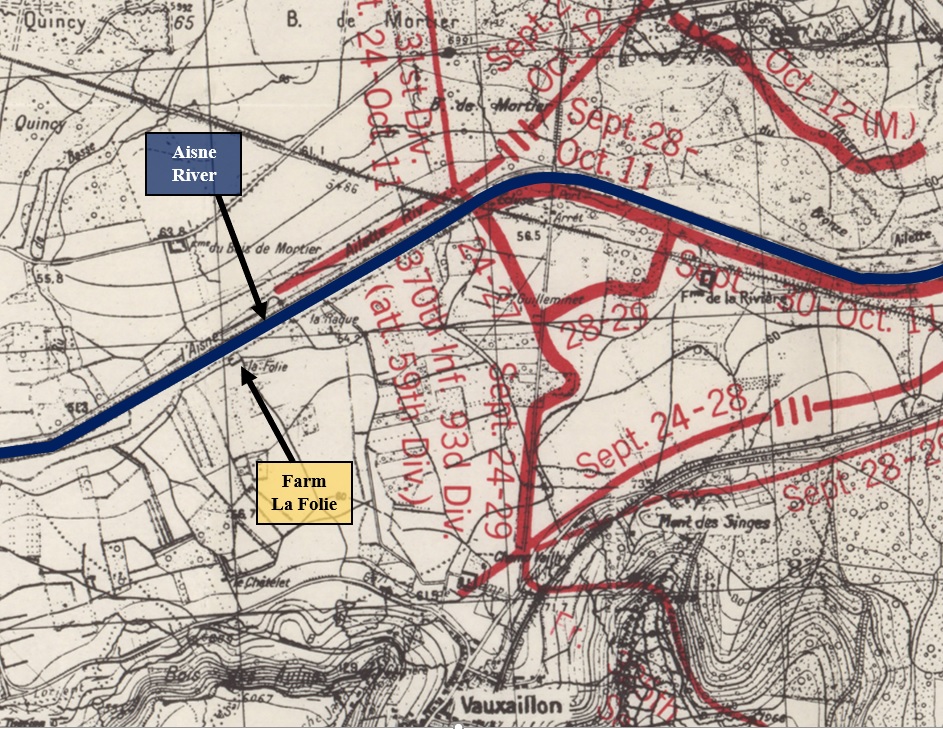


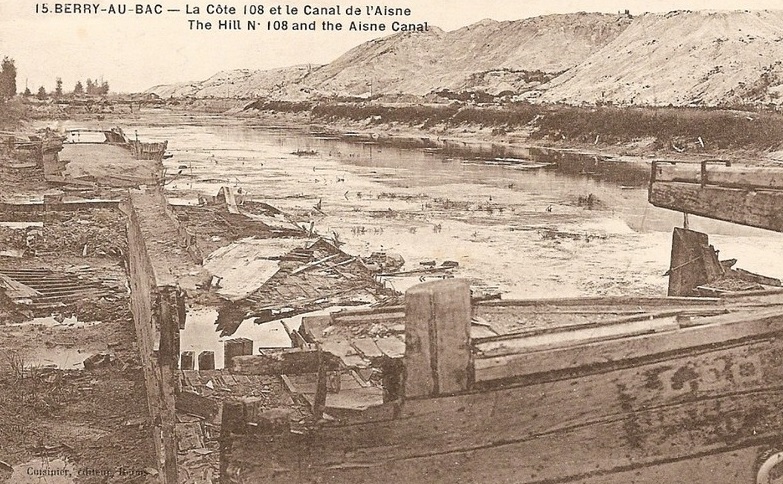
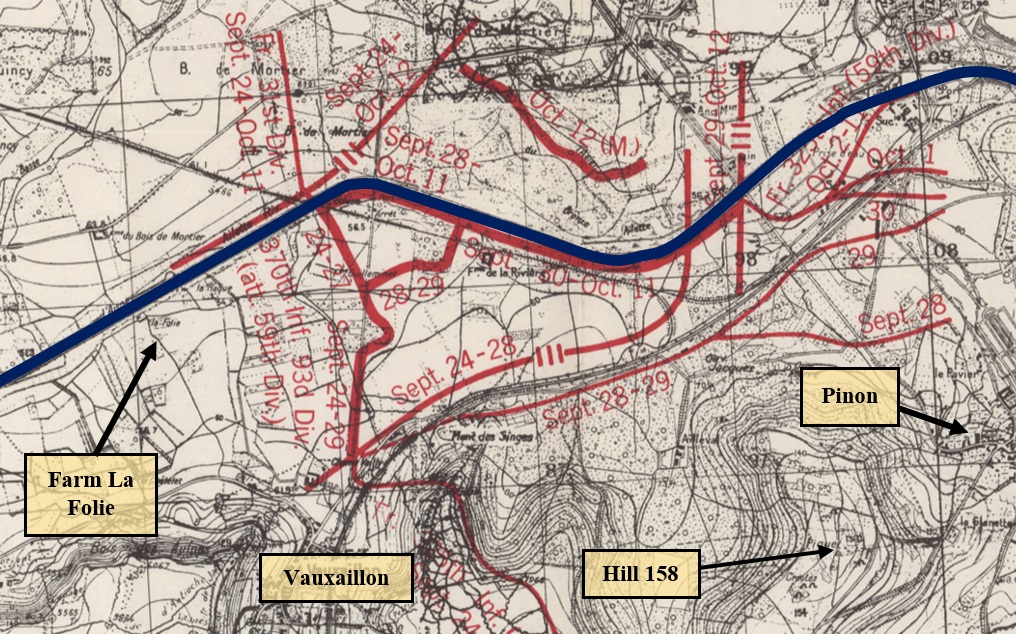
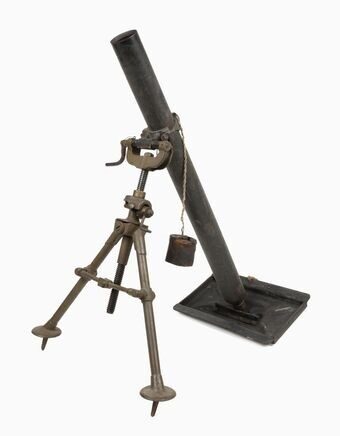
 Adopt-A-Hero Sponsor Dean D. Larrick
Adopt-A-Hero Sponsor Dean D. Larrick